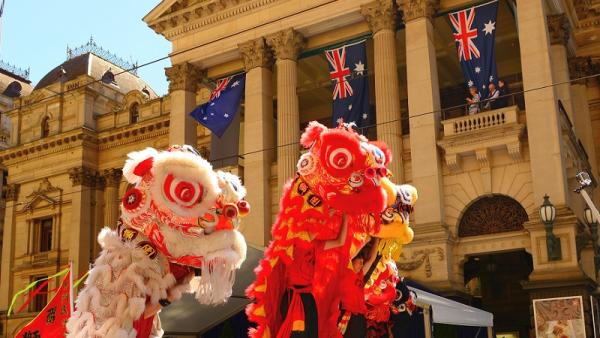Australians may not be motivated by racism when it comes to Chinese investment

James Laurenceson, Deputy Director, Australia-China Relations Institute, University of Technology Sydney |
This article originally appeared in The Conversation, April 19 2016.
Do Australian attitudes towards Chinese investment reflect racism? It’s a question I’ve often been asked but it’s a tough one to answer.
According to the 2014 Lowy Poll 56% of Australians think that the government is allowing too much investment from China.
Yet Australian Bureau of Statistics data shows that in 2014 China only accounted for 4.4% of the total stock of foreign direct investment in Australia. The US share was more than five times that of China.
When it comes to particular sectors of the economy such as real estate, the percentage of Australians who take the view that the government is allowing too much investment from China rises to 70%. The first year that Chinese investment in the sector began to outpace that from other countries was 2013-14 according to data from the Foreign Investment Review Board, which screens foreign real estate purchases.
One explanation for the attitudes of Australians to Chinese investment is racism but it’s not that simple.
Polls like the one from Lowy in 2014 ask questions like “Do you think the Australian government is allowing too much investment from China?” which really doesn’t tell us much, about racism or anything else.
It could be that Australians aren’t fond of foreign ownership regardless of where the money comes from. Or even if they do care about where it comes from, maybe they are more worried about other attributes of foreign investment.
For example, the public might not really mind a local company being acquired by a Chinese investor as long as Australians are left to manage the day-to-day operations. Indeed, research by KPMG and Sydney University found evidence that more and more Chinese investors are now adopting such localisation strategies.
The 2014 Lowy Poll found that Australians hold a particular sensitivity towards foreign investment in certain assets. Only 37% of Australians are in favour of foreign investment in ports and airports, compared with 58% in manufacturing.
In recent years foreign investors have acquired all or part of the lease to operate a number of Australian ports including Brisbane (2010), Newcastle (2014) and Darwin (2015). The lease to Australia’s busiest port, the Port of Melbourne, is expected to be sold later this year.
A new study I was involved in may shed some light on the issue. The specific question the research was trying to answer was what determined public preferences on foreign investment in critical Australian infrastructure assets such as maritime ports?
We asked a representative sample of 1,000 Australians to review hypothetical foreign investment scenarios and choose those they preferred the most and the least. These investment scenarios included eight different investment attributes ranging from the share of foreign ownership an investment would bring, to which country the investment was from, to whether the foreign company making the investment was government or privately-owned, and so on.
By varying the levels of attributes in each investment scenario – one might feature an investment from China while another might feature an investment from the US – we could estimate what preferences were at play.
The greatest concerns were found to be around foreign ownership and control, not country-of-origin. That’s good news: if racism was the driver we’d expect to see country-of-origin dominate.
What bothered Australians the most was the foreign ownership share that an investment would bring. A lower share was preferred to a higher one. Next was the length of the lease that a foreign investor would hold. Shorter leases were preferred to longer ones.
That said, consideration of country-of-origin did rank third in participant’s preferences. Five countries were considered: China, India, Japan, the United Arab Emirates (UAE) and the US. Investment from the US was most preferred while investment from China was the least preferred.
But before interpreting that as evidence of racism still being a factor, keep three things in mind.
First, Japanese investment was also statistically preferred to Chinese investment, while Indian investment was not. What links US and Japanese investment on the one hand and Chinese and Indian investment on the other is plainly not race.
Rather, what China and India have in common is that they are both relative newcomers to Australia as sources of foreign investment. In that sense, what we are seeing now with respect to Chinese investment may not be so different to public opposition to US investment in the 1960s and Japanese investment in the 1980s.
Second, the research suggests that Australians are more concerned with the size of the share of foreign ownership rather than the country-of-origin. Modelling showed, if all other attributes such as the lease length and so on were the same, the public would actually prefer a Chinese investment with an ownership share of 64% to one from the US that led to 100% foreign ownership.
Finally, even to the extent that the public do prefer investment from China less than from other countries, race is only one factor that might be at play. For example, the Australian public may have greater reservations about Chinese investment if they believe that the Chinese Communist Party holds undue influence over Chinese companies.
In other words, the objection to investment from China could be political rather than racial. More research is needed to discern the relative importance of the various factors that might lead to investment from China being less preferred.
Still, the next time I’m asked whether Australians are racist in their attitudes towards Chinese investment, I’ll more confidently answer that race is not their main concern.
Author
Professor James Laurenceson is Deputy Director of the Australia-China Relations Institute (ACRI) at the University of Technology Sydney.

